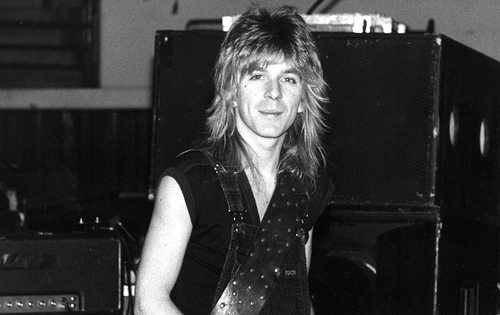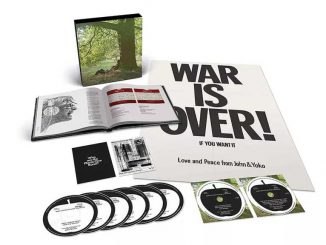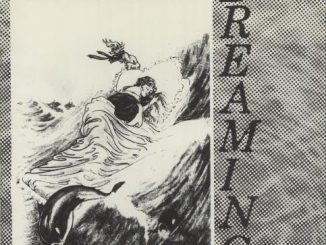A Tragic Accident Took The Life Of A Legendary Guitarist

The 1980s did not start well for Ozzy Osbourne. After being kicked out of Black Sabbath, the Prince of Darkness holed up in an L.A. hotel room, planning to remain as drunk as possible until his money ran out, and then probably move back to England to work as a laborer. He met future wife Sharon Arden by stealing $500 from her to purchase a profound amount of cocaine. Arden cursed out Osbourne, furious at the loss of money, but then took pity on him (he was crying, soaked in urine and supernaturally intoxicated) and agreed to help revive his career.
Auditions for a new band were arranged. Osbourne was very drunk, but can still recall the day a shy blonde kid came in, Arden telling Ozzy the boy was in a band calledQuiet Riot. “He plugs in his amp and starts doing these finger exercises,” Osbourne remembers in his autobiography I Am Ozzy. “I almost cried he was so good.” Osbourne was overcome with drink and passed out before the blonde kid had finished playing, but once it was over, Arden told him he had gotten the job.
The kid was Randy Rhoads.
Rhoads had become a fixture of the L.A. music scene in the mid 1970s. His band, the Whore, performed at parties at night and practiced in Rodney Bingenheimer’s English Disco during the day. The band evolved into Quiet Riot and began performing alongside Van Halen(many rock historians note the influence Rhoads and Eddie Van Halen had on one another) and landed a deal with Japanese CBS/Sony. Unfortunately, the deal prevented the outfit from releasing its first two albums Quiet Riot and Quiet Riot II in the US. So when the opportunity came to join the former Black Sabbath singer’s new solo project, Rhoads jumped at the opportunity.
The “finger exercises” that Osbourne had observed in Rhoads were the classical scales that Rhoads had been practicing since a young age. Combining classical guitar playing with metal had been lightly touched upon by ’70s guitarists like Deep Purple’s Ritchie Blackmore, but had yet to really catch on. The members of Quiet Riot never cared for Rhoads’ flirtation with the centuries old style, but Osbourne and his band were enamored with it and encouraged Rhoads to utilize it as much as possible. The sound would later become known as neo-classical metal (or “shredding”) and would dominate the guitar playing of 1980s metal records.
Osbourne discovered a similar creative synergy with Rhoads. In VH1’s Behind the Music: Ozzy Osbourne, Osbourne laments the songwriting process he had previously endured with Black Sabbath, stating that the band wouldn’t involve Osbourne in the creative process, coming up with the music and simply telling the shy singer with an inferiority complex to just sing something atop what they’d done. “Randy was a teacher; he had a lot of patience. We would bounce off each other,” Osbourne remembers. He would later state in his autobiography that with Rhoads it was “the first time I ever felt like an equal partner in songwriting.”
“Randy really built up Ozzy’s confidence,” Sharon Osbourne recalls. “The two became close friends, and it was the perfect relationship. The perfect partnership.”
The collaboration paid off with the album The Blizzard of Oz. Featuring singles “Mr. Crowley” and“Crazy Train,” the album would go on to quadruple platinum status, followed up quickly with Diary of a Madman, which Osbourne describes as his “favorite,” and features much of Rhodes innovative style of playing.
In 1981, Guitar Player Magazine presented Rhoads with an award for “Best New Talent.” In an interview the shy young man, surrounded by drunken band mates, was clearly humbled by the honor, and said…
Story continues on Page 2.
“It makes you realize there’s a lot of responsibility. On this tour I want to get myself together and work hard. Because I don’t want it to stop here.”

On the Diary of a Madman Tour, Rhoads did work very hard. “At each stop he would pull out the yellow pages and find a classical guitar tutor,” Osbourne says. While the band members would engage in the kind of partying that would kill a herd of elephants, Rhoads would be off in a hotel room or quiet part of the tour bus, practicing with the tutor.
On the way to a show in Florida during the tour, one week away from performing Madison Square Garden, Rhoads met with Osbourne at the tour bus’s kitchen table at three in the morning. It was March 19, 1982. “I don’t think I want to be a rock and roller anymore,” Rhoads said to his songwriting partner, explaining that he wanted to enroll in a university to study classical guitar. Osbourne was distraught and angry, finishing his fourth bottle of gin in less than 24 hours. “How could you now? Tomorrow we’re playing with Foreigner!” Still upset, Osbourne went to bed. The bus rolled on toward Florida. It was a seven-hundred mile drive from Knoxville, Tennessee, where Randy Rhoads had just played his final gig. The next day he would be dead at the age of 25.
The following morning, bus driver Andrew Aycock, reportedly awake all night on cocaine, made an unscheduled stop at a friend’s mansion in Leesburg, Florida in order to fix the buses air conditioning. The mansion had an airstrip with a small, 55 Beachcraft Bonanza airplane that a hyper Aycock was very excited to take for a joyride. Afraid of flying, Rhoads was hesitant when Aycock invited him to come along. Rhoads agreed, reluctantly, wanting to indulge his photography hobby with some aerial shots. Once in the air, Aycock decided to “buzz” the tour bus, wanting to give a sleeping Ozzy a good scare. No one knew that Aycock’s pilots certification had expired.
“It sounded like an engine at full revs,” Ozzy writes in his autobiography about being woken up by the terrific noise of an airplane buzzing just overhead. Sharon was asleep next to him; the sound faded away, then returned, then faded away. “‘Sharon,’ I said, ‘what the fuck is that noi–‘ then my head smashed into the bed frame as all the windows of the bus exploded. I jump out of bed and force open the bedroom door. There are tiny fragments of glass everywhere. There’s a fucking massive hole in the roof. Then I notice that the entire bus is bent into a V shape. I’m coughing from the smell of fuel and the smoke.”
Still drunk from the previous night’s gin and having no idea why the bus had stopped in the first place, Osbourne pulled his wife out of the flaming, torn bus, only to see a fireball explode out of a nearby mansion.
In attempting to “buzz” the tour bus, Aycock had made contact on the third pass, tearing the fiberglass wing off the plane and crashing it into the top of a pine tree, then into the home of his friend. The band’s hairdresser, Rachel Youngblood, was also in the Beachcraft Bonanza, along with Rhoads. All three were killed, their bodies burned to the point of requiring dental record identification.
Ozzy continued on with his career, battling drug and alcohol addiction, but still releasing albums and eventually becoming a reality TV star. In 1987, five years after his death, a live album titled Tribute, featured Rhoads and Osbourne performing in Cleveland, Ohio. Since his death, Rhoads has been widely recognized as one of the most influential guitar players of all time, honored in Top 100 lists and special edition guitars and amplifiers. Ozzy Osbourne, to this today, asserts that he has not gotten over the loss of his friend and collaborator. “It seems like the period of time I spent with Randy Rhoads was ten times longer than I was with Black Sabbath, and ten times longer than the time I’ve been without him.”
This article was written by Josiah M. Hesse on the Westworld Website




Be the first to comment